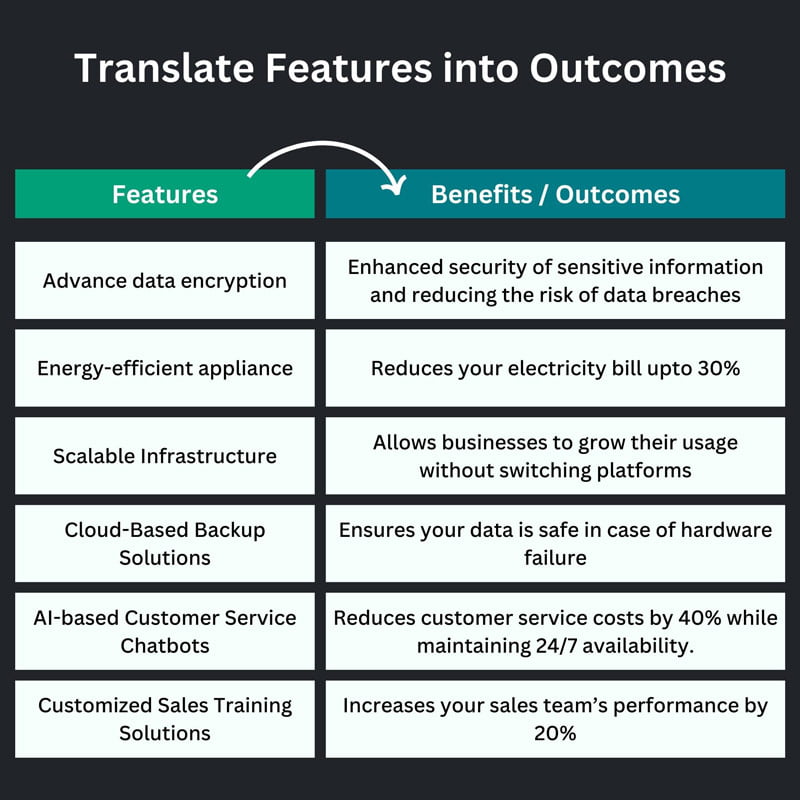Table of Contents
Winning new business and growing client relationships are perhaps the biggest challenges faced by B2B companies today.
But there exist proven sales strategies and best practices that enable sales teams to successfully convince prospects, beat competition and build long-lasting loyal customers.
In my 15+ years in various B2B sales leadership roles spanning industries, I have had the opportunity to learn what truly drives sales excellence based on first-hand experience.
In this article, I will share 13 highly effective sales strategies to help sales teams win more deals and build long-term customer relationships.
Key Takeaways :
13 B2B Sales Strategies to Win More Deals :
- Know Your Audience : Know your target audience inside out. Develop a clear ICP, understand their buying process, and prioritize high-potential accounts.
- Address Prospect's Pain Points : Focus on uncovering the real need behind the needs of the prospect. Listen intently, ask the right questions, and align your solutions to their pain points.
- Sell Results, Not Products : Transform product features into actual outcomes. Show the tangible value and results your product can deliver, and use customer stories to reinforce your claims
- Create Valuable Content : Develop content that addresses buyer needs at each stage of their journey. Leverage insights from customer interviews.
- Use Referrals & Testimonials : Tap into your satisfied customers for referrals and testimonials. Use these as social proof to establish credibility with new prospects.
- Follow-up with Leads : Regularly nurture leads through systematic follow-ups. Maintain credibility and provide value in every interaction.
- Prioritize Existing Customers : Focus on growing and retaining existing customers as they offer recurring revenue potential and lower acquisition costs.
- Consultative Sales Approach : Adopt a consultative approach by asking insightful questions, diagnosing before prescribing, and focusing on long-term solutions.
- Long-Term Relationship Focus : Build long-term partnerships with customers by treating them as partners, continuously delivering business value, and focusing on customer success.
- Align Sales & Marketing : Ensure both sales and marketing teams work together with common goals and unified strategies.
- Use Technology : Use CRM software, marketing automation tools, LinkedIn Sales Navigator, sales intelligence tools, and AI tools to enhance sales processes.
- Train Your Sales Team : Identify training needs, set clear objectives, and employ various training methods to equip your sales team with necessary skills.
- Measure and Optimize : Keep track of key sales metrics to understand effectiveness and areas for improvement in sales strategies.
13 Best B2B Sales Strategies to Win More Deals
So let us see the 13 B2B sales strategies to implement that can increase your win rates and close more deals.
1. Know Your Target Audience Inside Out
Who your target customers are should be crystal clear in your mind if you want to excel in B2B sales.
So that your efforts are focused in the right direction.
These are some ways to understand more about your target audiences
A. Define an Ideal Customer Profile
According to a report by TOPO, companies with a well-defined ICP have a 68% higher account win rates.
I have seen many sales reps struggle simply because they did not have a deep understanding of who their Ideal Customer Profile (ICP) is.
Over years of working with multiple sales organizations across industries, I realized that clearly defining your ICP is the starting point to sales success.
It helps sales professionals remain laser focused instead of spraying and praying.
Here are the information you should know while creating your ICP :
- Geography
- Demographic
- Firmographic
- Technographic
- Psychographics
Apart from the above information here are some key questions you need to find answers of :
- What are their pain points and challenges?
- How do they make purchase decisions?
- What content do they consume?
- Their Budget?
B. Map Customer's Buying Process
Figure out all the stakeholders involved in the buying process.
Understand their degree of influence and what each persona cares about.
This will allow you to tailor messaging and solutions accordingly.
C. Define a Qualification Criteria
Make a clear criteria that what makes an account a good fit, like company size, industry, tech stack, etc.
This helps frontline sales teams easily identify qualified accounts to pursue opportunities.
D. Prioritize Target Accounts
With limited selling time, identify and pursue high-potential “lookalike” accounts that closely resemble your best existing customers.
Go all in to win these strategically aligned accounts.
While speaking with the key decision makers in these accounts, you can always refer to similar customers you have worked with.
2. Focus on Prospect's Pain Points and Goals
Over the years, I have refined my ability to diagnose the root causes behind prospects’ stated needs during initial sales conversations.
I call it to uncover the need behind the need.
The idea is to first listen intently to understand where they are coming from.
Here is a simple but effective approach to have a solutions-focused discussion:
A. Uncover the True Need Behind the Need
Dig deeper by asking “why is that important to you?” several times to get to the heart of their pain points.
Ask the right open ended questions to get to the root cause of their need.
Resist the urge to pitch your product yet.
B. Connect Benefits Back to Their Priorities
After documenting all their needs, frustrations and desired outcomes, pivot the conversation to explain how your offering delivers against each of the things they have mentioned.
C. Provide Quantitative Proof
While demonstrating how you can help prospects achieve their goals, back up your capabilities with specific examples and metrics from customers in similar shoes rather than making vague promises.
Make use of case studies too.
D. Emphasize Long-Term Partnership
Make prospects feel that you’re in this together for the long haul, not just trying to make a quick sale.
The deal will happen once they see you as an invaluable partner.
3. Sell Solutions and Results, Not Just Products
Having been on both sides of the table, I’ve realized most sales professionals sound like product brochures rather than solutions advisors.
They rattle off countless features assuming prospects will connect the dots.
But as per my experience, the below approach works better:
A. Convert Product Features to Actual Outcomes
Avoid hyping features no one cares about.
Instead make a table where you write down your product features and convert them into outcomes it can get for prospects.
Analyze how specifically your product or service can impact revenue, productivity, user experience etc. for your prospect’s unique business needs.
B. Quantify the Complete Value Proposition
Calculate potential savings, revenue upside or other tangible outcomes your solution will drive for the prospect.
Show them the ROI your solution can get and demonstrate a compelling reason to change.
C. Use Your Customer Stories
Embed relevant proof-points and testimonials from existing customers about the outcomes they have achieved since partnering with you.
Use it in your client calls, proposals, presentations and demos.
D. Show Them the Future State
While speaking with customers, portray how their future state will look like when their existing problems are solved.
And position your solution as a bridge which can help them achieve that future state.
E. Offer Guaranteed Results
Consider providing a “Results Guarantee” tied to specific KPIs as applicable to handle the objections of going ahead with you first-hand.
This builds immense confidence.
The goal of any sales conversation should be to showcase concrete value over hype.
Sell outcomes, not outputs!
4. Create Valuable Content Focused on Buyer Needs
Once you have clarity on your target audience, the next step is to create content that resonates with what your potential buyers care about.
In my long sales career spanning large multinationals, this is a mistake I have seen many companies repeatedly make– they push product features rather than focusing messaging on addressing customer pain points.
Here are the places where you need to create content addressing your buyer’s needs :
- Your website & blogs
- Cold emails
- Your social media
- Your newsletters
- Webinars
In fact according to Spotio, 9 of 10 B2B buyers say that online content had moderate to high influence on their purchasing decisions
Here are few ways to develop high-quality and differentiated content :
A. Conduct Buyer Interviews
Directly engage with your potential customers via one-on-one interviews.
Understand from them what their most pressing problems are.
Let real buyer voices shape your content.
B. Map Content to Buyer Journey
Identify what information your prospects need during different stages of their decision-making process.
Develop the right content assets to assist them at each step.
For example – content for awareness stage vs exploration stage would vary.
C. Co-create Content With Your Sales Team
Since the sales team are the once always talking with customers, they can surely give you the challenges client often mention.
Then use those points to create a content that addresses each challenges.
That way your content directly speaks with your target audience and they see your brand as an authority in the niche.
D. Do Competitive Analysis
Conduct competitive analysis to determine content gaps your closest competitors are not addressing.
Develop content in these areas to stand out from the crowd.
Creating buyer-focused content requires listening first.
So turn down the product pitch and turn up the empathy!
5. Leverage Referrals and Testimonials
From my personal experience of being a Founder of Sales & Profit, I can vouch that referrals and testimonials helps establish credibility and trust with new prospects.
But simply asking customers for referrals rarely works.
It requires a systematic approach :
A. Identify Your Best Advocates
Your most successful and satisfied customers that have seen real business impact from your solution are the best sources of referrals. Engage deeply with them.
B. Proactively Ask for Introductions
Don’t just wait for referrals and testimonials to come your way passively.
Be forthright in asking your advocates to connect you with other decision makers in their network upon achieving desired outcomes from your solution.
Those decision makers can hold more authority and getting their testimonial will create a greater impact.
C. Involve Your Account Managers
Assuming your account managers have a strong relationship with the customers, you can always take their help to convince the customers for a testimonial or referral.
Since the account managers already have their credibility built, there is a greater chance the customer will agree.
D. Offer Referral Incentives
Consider providing special discounts, service credits or access to premium content to customers who refer your services to their network.
This motivates happy customers to proactively make introductions.
E. Use These Testimonials as Social Proof
Collect video and written testimonials showcasing the ROI and success your customers have achieved.
Publish these in your sales collateral, website and social media to build credibility.
As per the study published by G2, 90% of B2B buying decisions are influenced by reading reviews.
Leveraging referrals and testimonials serve both purposes – getting warm introductions to qualified leads while also being able to demonstrate concrete proof of your capabilities
6. Follow Up Regularly with Sales Leads
Over 80% of leads are never followed up with by sales reps as per multiple studies.
And 48% of salespeople never even make a single follow-up attempt
And yet, regular nurturing is key to converting contacts into paying customers.
In my experience, once sales reps are consistent in their follow ups, after a point it becomes a part of their DNA.
And the probability of “Good Follow ups” will keep increasing compared to “standard low-value follow-ups”.
Here are few Follow up best practices :
A. Maintain Credibility
Every interaction, including follow-ups, should enhance your credibility in the customer’s eyes.
Be prepared with relevant information and responses to potential questions or concerns.
B. Identify Key Stakeholders
Determine who else is involved in the decision-making process and understand their viewpoints.
Try including them in your follow-ups too.
C. Provide Value in Every Interaction
Do not straight away pitch your product. Share relevant content, industry insights and educational material proving that you add value.
D. Set Reminders to Follow Through
Use your CRM system or other reminders to schedule timely and systematic follow-ups with each lead.
Get calendar alerts if needed.
E. Be Persistent but Respectful
Following up consistently demonstrates your genuine commitment to helping prospects, and positions you as a trusted advisor rather than a transactional salesperson.
But also don’t be a pest for them, based on prospect’s reactions make your follow ups less frequent.
F. Directly Ask for Next Steps
Every follow-up should end with confirmation on specific, tangible next steps like another discussion, requirement gathering call or sending proposal.
G. Transfer the Inactive Leads to Marketing
Many a times after multiple follow ups there still won’t be much action going on.
In such cases transfer those cold inactive leads to the marketing team. So that they can include them in their newsletter list and nurture it further.
7. Prioritize Existing Customers
Over several years of managing enterprise accounts, I have seen far too often that sales teams get overly obsessed with hunting new logos and forget about expanding existing relationships.
But retaining and growing customers should be the top priority.
Here’s why :
A. Recurring Revenue Potential
An existing customer that’s already seen value in your products is more likely to buy more over time and provide larger lifetime value.
B. Referrals and Testimonials
As discussed above, happy customers can become your biggest advocates and provide referrals, testimonials and success stories helping you win new accounts.
C. Lower Acquiring Costs
The cost of acquiring an existing client is much lower compared to acquiring a new customer, owing to established familiarity and trust.
D. Upside in Account Control
With multiple relationships across the customer account, you increase ownership and reduce risk of competitors displacing you.
8. Use Consultative Sales Approach
Having been an individual quota carrying sales rep for the larger part of my career before moving to sales leadership, I strongly believe in a consultative selling approach.
Here are few tenets of this philosophy from my experience :
A. Ask Insightful Questions
Rather than too much talking, focus on probing your prospect’s world with relevant open-ended questions to deeply understand their motivation and context.
B. Diagnose Before Prescribing
Like a good doctor, diagnose the client’s problems before offering solutions.
Understand their pain points thoroughly before suggesting how your product or service can help.
C. Connect Needs to Solutions
Customize your solutions based on the specific needs and challenges of the client.
Avoid a one-size-fits-all approach, instead demonstrate how your solution addresses their unique situation.
D. Focus on the Long-Term
Prioritize long-term success over short-term gains.
Make recommendations that are in the best interest of the client, even if it means a smaller sale or a longer sales cycle.
9. Focus on Long-Term Relationships
In continuation of my previous point, transactional selling is a short-sighted approach centred around closing each deal rather than a long-term partnership focused on mutual success.
Here are few ways to focus on long-term relationships :
A. Treat Customers as Partners
Involve customers early on and regularly in your product development cycles.
Co-create solutions keeping their needs above everything else.
B. Drive Business Value Continuously
Keep identifying ways to help customers accomplish more.
Solve more user problems, deliver incremental improvements.
Don’t become complacent.
C. Obsess About Customer Success
Work relentlessly to ensure clients achieve the outcomes they signed up for.
Chase customer satisfactions and growth ahead of your own targets.
D. Take Feedbacks and Act on It
Regularly ask for feedback on your products, services, and the overall experience of working with your company.
Importantly, acton this feedback to make improvements.
E. Develop Personal Connections
Sales is catalysed through the heart, not just the head.
Establish authentic connections, trust and likability at multiple contacts across customer accounts.
Transforming sales interactions from random transactions into embedded partnerships is the key to customer lifetime value and advocacy.
10. Align Sales and Marketing Functions
Misalignments between sales and marketing teams can prove very detrimental for revenue growth.
It results in poor lead conversions and confusing messaging to the customer.
As someone who manages both sales and marketing teams, I’ve realized that when the marketing team performs well, the entire organization benefits.
But if the marketing team slows down, there is a direct impact on sales team’s performance.
Here the some ways to ensure alignment of Sales & Marketing teams :
A. Establish Common Goals and Objectives
Start by defining clear, shared goals for both sales and marketing.
These might include revenue targets, number of leads, order conversions, new logos acquisition etc.
B. Develop a Unified Strategy
Work together to create a cohesive strategy that covers all stages of the buyer’s journey.
This should involve coordinated efforts in lead generation, nurturing, conversion, and customer retention.
C. Ensure a Common ICP
Both teams should collaborate to develop detailed Ideal customer profile.
Make sure both the teams target similar ICP so that the efforts are in the right direction.
D. Align Content and Messaging
Ensure that the content created by marketing resonates with the sales team.
To make sure the content speaks customer’s language, marketing team should take inputs from the sales team.
11. Leverage Technology
Technology is changing so fast, it’s hard to keep up with the advancements.
If you want your sales team to be successful, they need to adopt and use technology in the sales process.
As a Co-Founder of Sales & Profit myself, I have always encouraged my sales and marketing team to implement tech tools wherever it can save time and increase productivity.
Some platforms or technology worth investing in are :
A. CRM Software
Centralize lead, account, contact and opportunity data for smarter selling with platforms like Salesforce. or Hubspot
B. Marketing Automation Tools
Tools for database building, cold emailing, social listening, social media management and intent data tools
C. LinkedIn Sales Navigator
LinkedIn Sales Navigator is a great tool for companies in B2B space with much advance filters then normal Linkedin.
It helps being the sales and marketing team laser focused on the your ICP.
D. Sales Intelligence Tools
AI tools like Gong or Chorus.ai analyze sales calls and meetings to provide insights into customer interactions, helping to improve sales strategies and communication.
E. Sales Forecasting Tools
Tools like Clari use AI to predict sales outcomes, helping sales leaders in forecasting and pipeline management.
F. AI Tools
Since the AI boom, chatbots like ChatGPT or Google Bard have emerged.
After using these chatbots, I can surely say that these tools have great capabilities.
A recent report by Hubspot says, 78% of sales professionals say that AI can help them spend more time on more critical tasks
But to learn to use these tools, one has to try using them first practically.
We had done these two webinars recently which can be of help.
12. Train and Empower Your Team
As a leading sales training company in India, we know the importance of effective sales training programs.
We’ve seen most sales leaders complain their team lacks skills.
But very few invest adequately in sales training for exponential growth.
Here are few best practices that we always implement :
A. Assess Training Needs
Start by identifying specific skills and knowledge gaps within the sales team
B. Set Clear Objectives
Define specific, measurable goals for the training program.
C. Assess Training Needs
Tailor content to your industry, products, and sales processes.
D. Blend Learning Methods
Combine various methods like e-learning, workshops, and role-playing.
E. Use Real-world Scenarios
Incorporate the recent deals sales reps are working on, and real-life customer situations in training.
F. Leverage Experienced Salespeople
Use seasoned team members for peer learning and insights.
G. Track Success
Measure the ROI of sales training and its impact on sales performance to understand how the learnings are applied and retained.
H. Management Involvement
Ensure sales managers actively support and reinforce the learnings in training programs.
G. Conduct Reinforcement Sessions
Regularly schedule sessions to reinforce and revisit key training concepts, ensuring long-term retention and practical application of skills learned.
13. Measure and Optimize
As the saying goes, “You can’t manage what you don’t measure.”
Tracking key sales metrics is indispensable to improve.
Based on my experience, here are some ways to measure impact on sales :
A. Activity and Behaviour Metrics
Log and analyze outbound connects, conversations, meetings, proposals, presentations etc. per rep to understand activity effectiveness.
B. Funnel Progression Analysis
Measure lead velocity through sales funnel stages – MQL to SAL to SQL to closure rates. Diagnose where drop-offs happen.
C. Win/Loss Analysis
Capture data for deals that are won vs lost including reasons to continually improve proposals, positioning and pricing.
D. Customer Lifetime Value
Determine the revenue customers generate over their tenure to drive greater wallet share through upsell and cross-sell.








